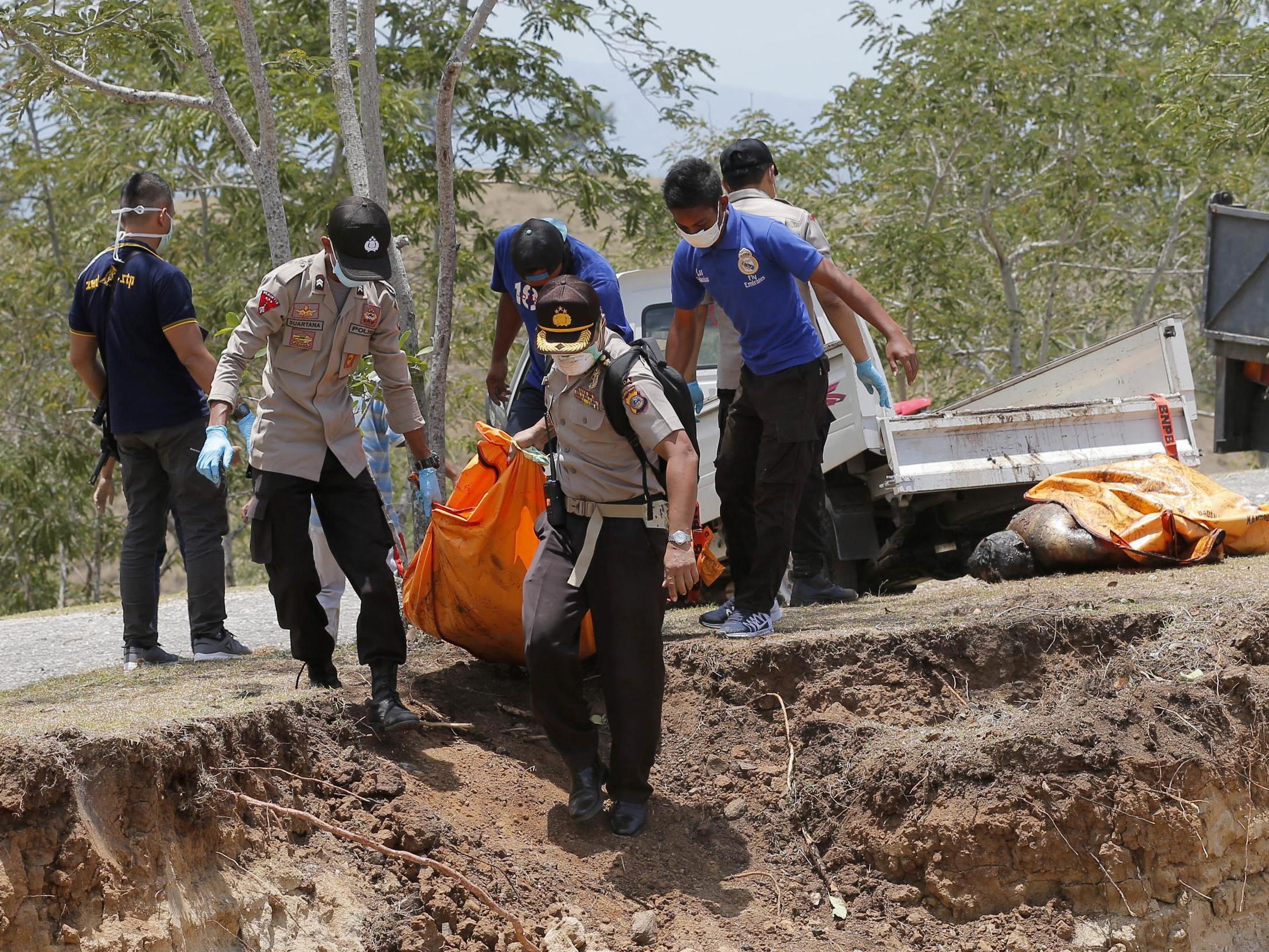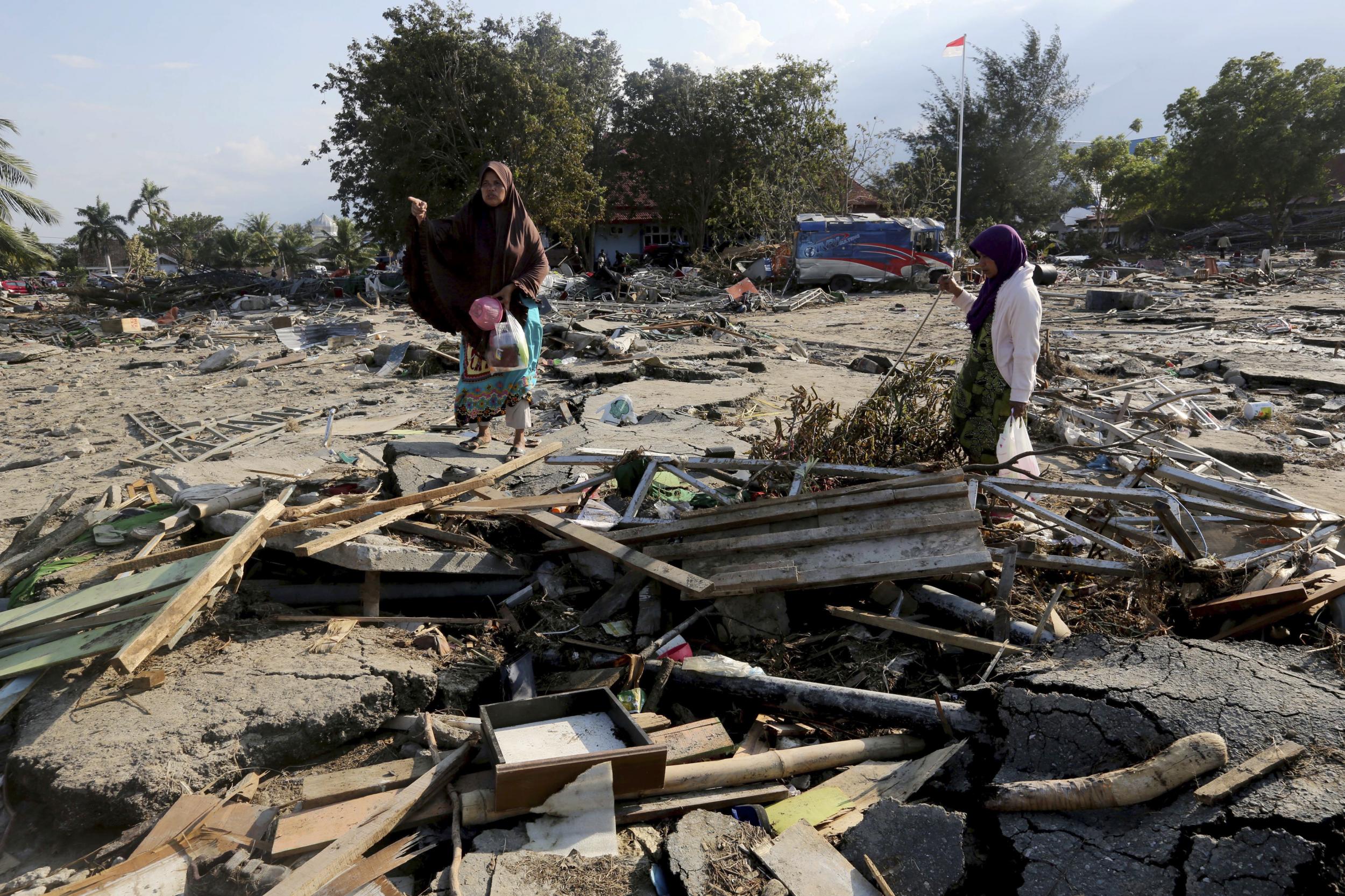Indonesia tsunami: Mass burials begin as desperate survivors plead for help
'We have not eaten for three days,' local says
Mass burials have begun in Indonesia after the country was hit by a powerful tsunami triggered by a 7.5 magnitude earthquake, killing at least 844 people.
The death toll is expected to rise as rescuers reach coastal areas that were cut off by the quake.
Search and rescue teams are yet to fully assess the situation in the towns of Donggala, Sigi and Parigi Moutong.
Some 1.2 million people live across the three areas.
A mass grave, measuring 10m by 100m, has been dug in the hard-hit city of Palu, the capital of Indonesia’s central Sulawesi province.
According to Tiopan Aritonang, a local army commander, 545 bodies will be brought to the grave from one hospital alone, and 18 burials have already taken place.
All the victims coming from local hospitals have been photographed, so that families can locate where their loved ones have been buried.

The area, next to a public cemetery, can hold 1,000 bodies, said local military spokesman Mohammad Thorir.
“This must be done as soon as possible for health and religious reasons,” said Willem Rampangilei, chief of Indonesia‘s National Disaster Mitigation Agency.
The majority of Indonesia’s population is Muslim and religious custom calls for burials soon after death, traditionally within 24 hours.
Video footage showed residents walking between body bags and checking to see if they could identify faces.

Survivors in Palu are becoming increasingly desperate as food and supplies in the area run low.
Local television said around 3,000 people rushed to Palu airport and attempted to leave the city.
Some residents were filmed screaming in anger after they were unable to board departing military planes.
Only a few commercial flights are leaving from the airport.
“We have not eaten for three days!” one woman yelled. “We just want to be safe!”
Nearly 50,000 people have been displaced by the quake in Palu alone.
The city is home to 380,000 residents.
“We will send food today, as much as possible with several aircraft,” said disaster agency spokesman Sutopo Purwo Nugroho, adding that generators, heavy equipment and tents were also needed.
Palu’s streets are strewn with debris from fallen buildings, including from a damaged mosque, a collapsed bridge and a shopping complex.
In the Petobo area of the city, the quake caused liquefaction, when loose, water-filled soil near the surface loses its strength, causing massive damage.
“In Petobo, it is estimated that there are still hundreds of victims buried in mud material,” Mr Nugroho said.
Residents, who pulled loved ones both alive and dead from the rubble, expressed frustration over the fact that rescuers only arrived in the area on Monday.
“Up to Saturday we still saw many people screaming for help from the roofs,” said 52-year-old Idrus.
“But we could not do anything to help them. Now their cries are no longer heard.”
Many people are also believed to be trapped under destroyed houses in the Balaroa area of Palu.
Hundreds have been injured and hospitals in the city have been overwhelmed with patients.
Indonesia is vulnerable to earthquakes due to its location in the Ring of Fire, an arc of fault lines and volcanoes across the Pacific Basin.
In December 2004, an earthquake off Sumatra island in western Indonesia triggered a tsunami that killed 230,000 people in a dozen countries.
Associated Press contributed to this report
Join our commenting forum
Join thought-provoking conversations, follow other Independent readers and see their replies
Comments
Bookmark popover
Removed from bookmarks